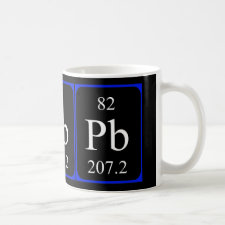
Authors: Karabörk M, Gök A
Article Title: A novel ion-imprinted nanocomposite for selective separation of Pb2+ ions.
Publication date: 2018
Journal: Journal of Macromolecular Science, Part A
Volume: 55
Issue: (1)
Page numbers: 90-97.
DOI: 10.1080/10601325.2017.1387494
Abstract: In this study, the ion-imprinting method has been integrated to develop a novel composite material for the selective separation of Pb2+ ions. Also, Pb2+ ion binding ability of the organosmectite based inorganic-organic composite incorporation of bicyclic C18 organic compound into smectite layers was conducted to draw a projection its potential use as a solid phase exchanger which is quite selective toward Pb2+ ions. The ion-imprinted nanocomposites were characterized by Fourier transform infrared (FTIR), X-ray diffraction (XRD), swelling tests, and elemental analyses. After that, maximum binding capacity, pH, and equilibrium binding time were also been optimized. In order to show the selectivity of the composite synthesized, non-imprinted composites were also synthesized in absence of Pb2+ ions during polymerization. In this step, Ni2+, Co2+, Al3+, Zn2+, and Cu2+ ions were used as competitors under batch adsorption conditions. The relative selectivity coefficients of imprinted composite were calculated as 28.5, 156.5, 69.3, 24.8 and 131.6 for Pb2+/Co2+, Pb2+/Cu2+, Pb2+/Al3+, Pb2+/Zn2+, Pb2+/Ni2+ binary solutions, respectively. Finally, reusability of the composites was evaluated to show its cost-efficiency by repeating adsorption-desorption experiments ten-times. The adsorption capacity of the imprinted composites did not change significantly whereas that of non-imprinted version reduced dramatically
Template and target information: lead ion, Pb(II)



Join the Society for Molecular Imprinting

New items RSS feed
Sign-up for e-mail updates:
Choose between receiving an occasional newsletter or more frequent e-mail alerts.
Click here to go to the sign-up page.
Is your name elemental or peptidic? Enter your name and find out by clicking either of the buttons below!
Other products you may like:
 MIPdatabase
MIPdatabase









